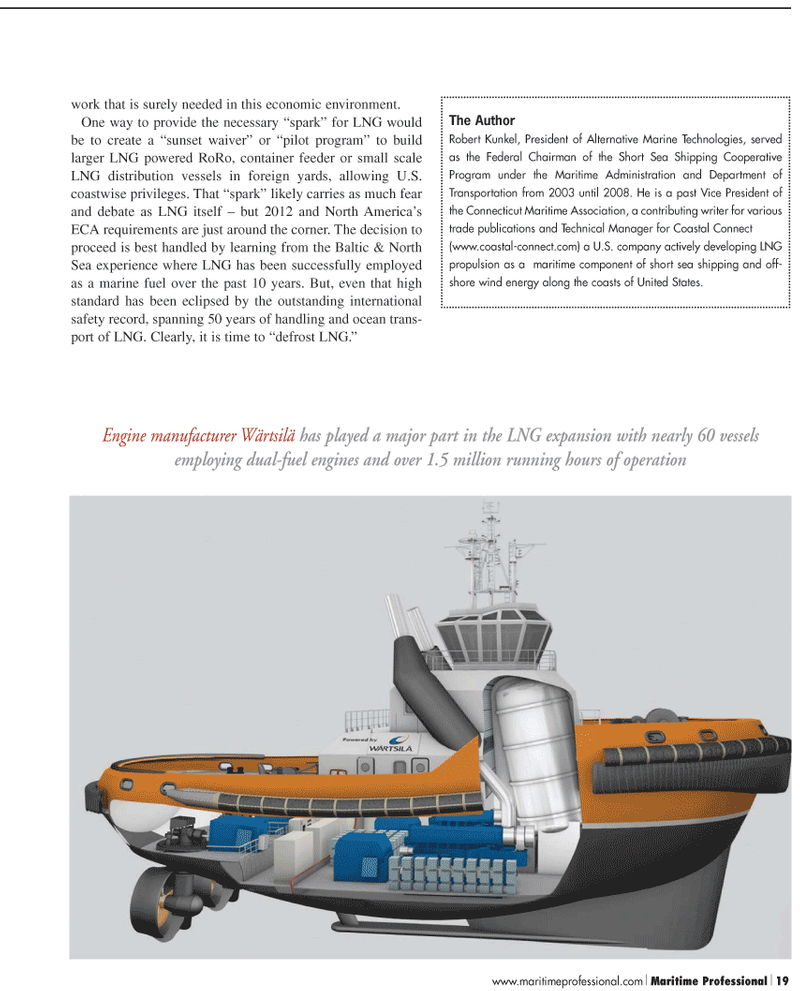
Page 19: of Maritime Logistics Professional Magazine (Q2 2011)
Energy Transportation
Read this page in Pdf, Flash or Html5 edition of Q2 2011 Maritime Logistics Professional Magazine
www.maritimeprofessional.com Maritime Professional 19 work that is surely needed in this economic environment.
One way to provide the necessary “spark” for LNG would be to create a “sunset waiver” or “pilot program” to build larger LNG powered RoRo, container feeder or small scale
LNG distribution vessels in foreign yards, allowing U.S. coastwise privileges. That “spark” likely carries as much fear and debate as LNG itself – but 2012 and North America’s
ECA requirements are just around the corner. The decision to proceed is best handled by learning from the Baltic & North
Sea experience where LNG has been successfully employed as a marine fuel over the past 10 years. But, even that high standard has been eclipsed by the outstanding international safety record, spanning 50 years of handling and ocean trans- port of LNG. Clearly, it is time to “defrost LNG.”
The Author
Robert Kunkel, President of Alternative Marine Technologies, served as the Federal Chairman of the Short Sea Shipping Cooperative
Program under the Maritime Administration and Department of
Transportation from 2003 until 2008. He is a past Vice President of the Connecticut Maritime Association, a contributing writer for various trade publications and Technical Manager for Coastal Connect (www.coastal-connect.com) a U.S. company actively developing LNG propulsion as a maritime component of short sea shipping and off- shore wind energy along the coasts of United States.
Engine manufacturer Wärtsilä has played a major part in the LNG expansion with nearly 60 vessels employing dual-fuel engines and over 1.5 million running hours of operation

 18
18

 20
20
